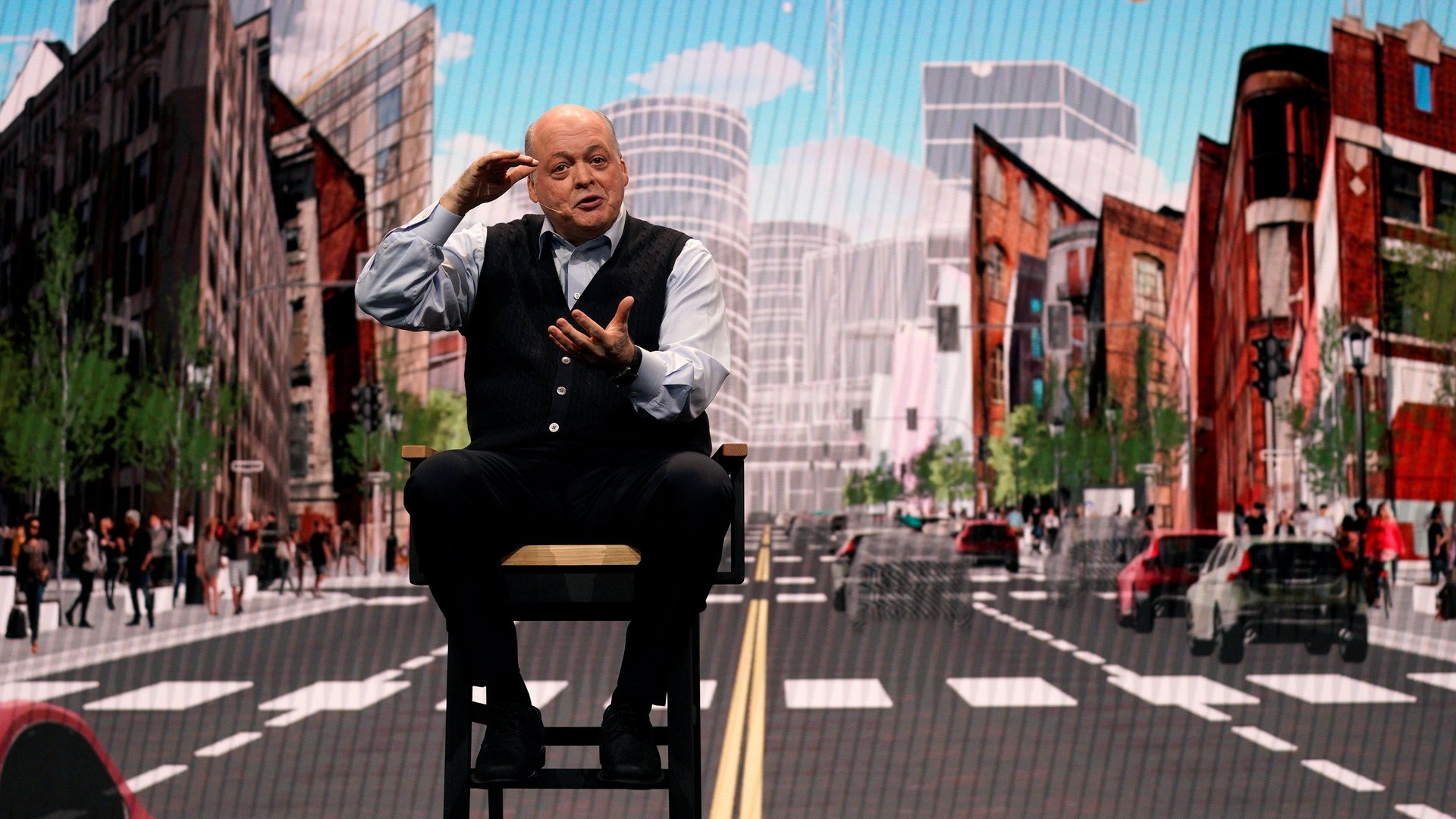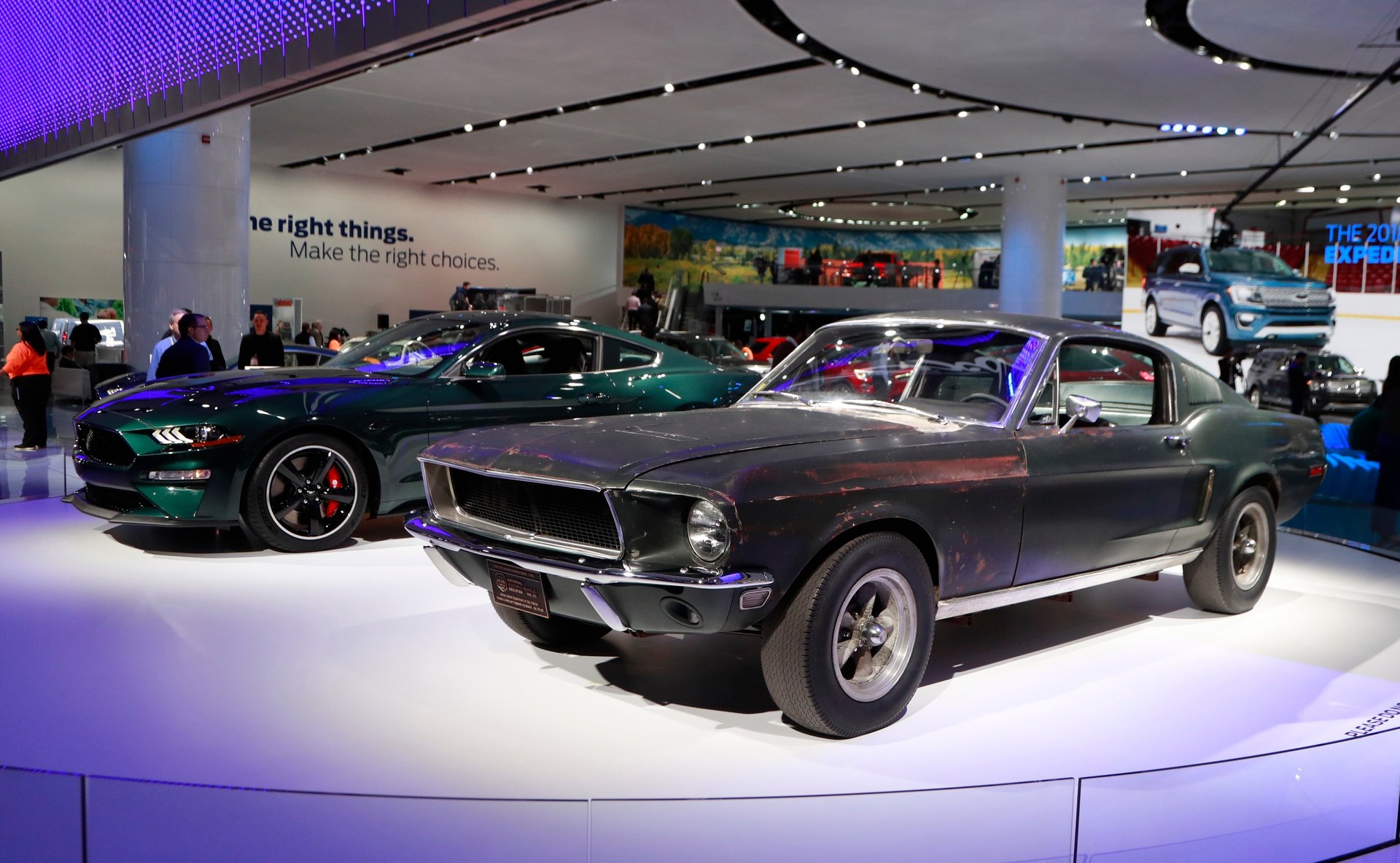Ford CEO Jim Hackett on the future of computing, cities, and self-driving cars
In May 2017, Ford announced that it had replaced its CEO, Mark Fields, who had been with the company since 1989, with Jim Hackett. Despite being on Ford’s board since 2013, Hackett was probably best known for leading Steelcase, the large office-furniture company, for decades and turning around its fortunes, as well as for working with the University of Michigan to bring NFL coach Jim Harbaugh to the school. Other than the fact that all these things are based in Michigan, there wasn’t really much that pointed to Hackett as the person who would lead the 114-year-old company into the future.


In May 2017, Ford announced that it had replaced its CEO, Mark Fields, who had been with the company since 1989, with Jim Hackett. Despite being on Ford’s board since 2013, Hackett was probably best known for leading Steelcase, the large office-furniture company, for decades and turning around its fortunes, as well as for working with the University of Michigan to bring NFL coach Jim Harbaugh to the school. Other than the fact that all these things are based in Michigan, there wasn’t really much that pointed to Hackett as the person who would lead the 114-year-old company into the future.
But his first few months at the helm have cemented his vision for Ford. Earlier this month he released a treatise doubling down on the company’s commitment to autonomous vehicles and the loosely defined concept of “mobility” and the “transport operating system” of the future. Still, he inherited a company plagued by old pains that required attention. Days before he started, Ford announced it would lay off 10% of its workforce in an effort to run more efficiently. Hackett has since said the company will likely trim down the number of car models Ford sells, as part of sweeping cost-cutting measures across the company.
Just this week, Ford’s stock plummeted on its profit outlook for the year, and the admission that the way its business is structured is “out of sync” with its revenue, according to Reuters. The company said it hopes to “create sustained value over the long term,” by reducing its model offerings.
But Hackett has also overseen new initiatives that point the way to better days for Ford, including Edison, an internal group tasked with building electric vehicles that may rival Tesla in more than just name. It has also forged partnerships in autonomy, like Lyft and Dominos, to figure out how consumers will use and interact with self-driving vehicles.
With all this as a backdrop, Quartz caught up with Hackett at this year’s CES trade show in Las Vegas, Nevada, where Ford had one of the more prominent booths. The following is a transcript of the interview, edited and condensed for clarity.
Quartz: How difficult a challenge is it for Ford, a car company, to gain trust in these new technology areas—computing, sensing, and all the other things you’ll need for this future of mobility you’re striving for?
Hackett: We’re humbled about that assignment. We think one needs to be, and we’re building on the history that the company’s had in its 100 million occupants of vehicles it has today. [The car], it’s a personal object today. For example, on our F-150 business, we know our customers love their vehicles. They have tremendous passion for them, so the opportunity to interpret new technology for them presents itself to us in a way that we have an advantage. It’s because we understand them acutely that we can translate these technologies in ways we don’t offend or perturb them. In my history in doing this, you celebrate your insight about people over the capability of the object. But the capability of the object is being morphed and shaped in ways to give people these advantages.
A second reason is it’s hard for me to put my thumb on it, but when Ford came through this really tough time in 2008 and its people worked its way out of it—it didn’t take a bailout—there’s a higher level of trust for a company that’s done that. I give kudos to [former CEO] Alan Mulally and the leadership team for that.
And then third, this is the second time I’ve worked in a company where there’s a family personality to it—it’s a big advantage. It makes the company seem more accessible, that it cares, that they think about the long arc of their impact. Bill Ford, a partner that I have as chairman, has been outspoken about the social responsibility of the company in areas like carbon footprint, and making mobility accessible to parts of the world where they’re limited. He gave a TED talk that was incredible about this. So I think that has been a catalyst of trust that says he’s been looking at these issues from a human perspective in the past, so we have a chance to continue that.
What do you see as the biggest challenges to realizing this mobile future? Are they technological, regulatory, or societal?
The biggest challenge—it’s also an opportunity—is that the system won’t be controlled by one force. In computing, as much as we feared monopolies or control by any one of these tech companies, ones reliant on the network business, ones reliant on the software, and ones reliant on the chip-building, they had to find ways to partner to build this incredible magic. And the opportunity is to do that again in this transportation operating system. It’s a big challenge, though, because you’re creating an open environment where people have to come together and work towards a common goal.
You remember when you could come [to CES] and they would talk about “standards” for computing? I’m old enough to remember when there weren’t any. USB wasn’t always here. But once they agreed on that standard, what it did to relieve the tensions for the users was incredible. And we have that same challenge.

What does it mean for revenue, for a company like Ford, when the concept of ownership disappears, and cars are a service, rather than an asset?
I’m holding the belief right now that cars don’t disappear in this future. In fact, they just become an actor in a play, and ownership isn’t compromised in that action. We think we just see too much passion for people that own Mustangs and F-150s that we don’t ever imagine them wanting to delegate that to a robot, per se. But what if we could create the vehicle to be so smart that it’s so much safer for when they are driving it and having fun? That’s an advantage for everybody.
Ford’s not planning on a future where it doesn’t sell more cars. It believes in cities. There’s a destiny where the density means there’s different kinds of platforms that we used to know as cars. For example, that’s alive today is our Chariot [on-demand bus service] idea. It’s an analog platform today where people can share rides. It really helps the city for every one of these Transits [a Ford van model] put in circulation, we can have 10-20 cars being brought out of the congestion. It’s a big advantage, and it’s very Ford-like: We’re still transporting our customers, it’s just a different way of doing it.
How are you approaching things differently than your predecessor, Mark Fields, who we spoke to here a few years back?
I learned a lot from Mark. He was not a Luddite. He actually inspired a lot of the early work on autonomy. What I think I bring is the experience in the past, where the industry and the object of that industry was seeing technology, like, being feathered in. Think of desking and computing as, kind of, handshaking. But eventually the feathering became “in part of.” [Former Wired editor] Kevin Kelly wrote a book called What Technology Wants, and he basically says it just is, it’s not adjacent. Ford has seen that technology “is,” and what I think I can bring to the party is the way you rethink the design of systems then because technology just “is.” It’s an empowering component to the way you think about designing for humans.
And that’s why something like autonomous taxis are just one part of Ford’s vision for the future? Are other companies thinking as broadly?
Humbly, I’m finding that we’re unique in this perspective. I’m old enough to remember coming here when the computer was first displayed. The box was objectified. Then they came back and introduced the world to the word “peripherals.” And that became a layering of capability. And after that, there were times when the box and the peripherals didn’t move, and we were talking about “wireless.” And then the march of 3G, 4G, and 5G [connectivity].
Computing found its way out of an object into peripherality and the system that was going to come from. But I’m convinced we should start there now instead of waiting for that. And Ford has a chance to author this, and it may be why I was asked to come into the role.
What’s the most exciting thing that Ford is launching this year?
A bunch of great ideas come to mind. [Hackett asks his PR handler if they’ve announced what will be coming at the Detroit auto show yet; he says no. Hackett begins again.]
Unsung is the Ford engineering. It’s really incredible. You can’t believe the number of people that were recruited in the last 10 years into tech companies because they have this mechanical engineering capability. So there’s these things in these new vehicles that are extraordinary, live-saving, kinds of things. I get a letter probably every other week from an occupant where [a Ford] car saved their life.
So when you ask me that, I’m so proud when I see that part get amplified. And CES celebrates a couple of those engineering feats. But there’s also great passion and romance in them.